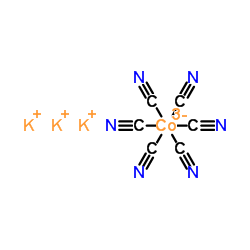| Structure | Name/CAS No. | Articles |
|---|---|---|
 |
Potassium hexacyanocobaltate
CAS:13963-58-1 |
|
 |
4-Chloro-3,5-dinitrobenzoic acid
CAS:118-97-8 |